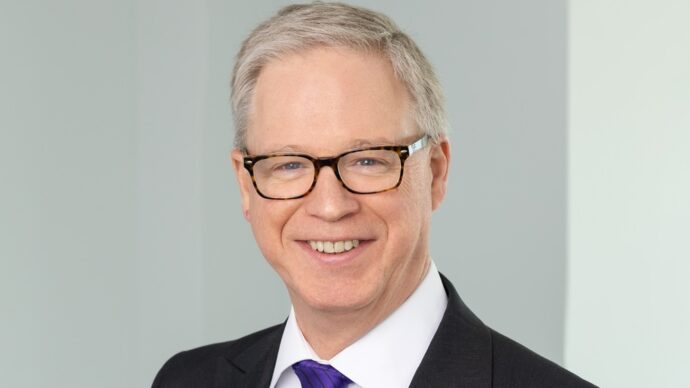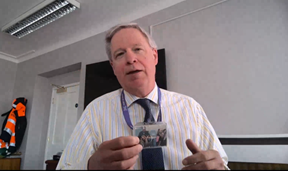NEWS
Safer Tomorrow thought leadership series: Doug Bannister
Campaigns |Published: Jul 2, 2025

In the latest article in our PSS Safer Tomorrow series, Doug Bannister, CEO at the Port of Dover Authority, explains that a safer future is not about ticking boxes or buying the latest equipment, but about fundamentally shaping how people think and behave.
Doug’s vision of a safe port is easy to define, even if it isn’t easy to deliver. “It must be a port where no one gets hurt,” he says. “And that’s not just our employees — it’s everyone who travels through, uses, or works at the port.
“You look at the data to benchmark against last year’s performance, or against other ports or sectors, but at the end of the day, the objective has to be zero harm.”
So, if zero harm is the goal, how does Doug believe the port sector can get there? As many other Safer Tomorrow conversations have revealed, he sees company culture as the true game changer.
At Dover, they recognised this about 18 months ago. Doug explains that despite having robust processes, commendations such as RoSPA Gold Awards, and a new incident recording system that improved tracking of near misses and proactive safety measures, avoidable incidents were still happening. The management team realised they had to act before one of those near misses became a tragedy.
“We brought in a company to benchmark our safety culture, and that showed us it wasn’t where we wanted it to be,” he says.
“We did some immersive training on a serious incident and insisted everyone in the company attended. It was really eye opening. We also relaunched our Stop and Think campaign, encouraging people not only to stop a job if they feel unsafe, but to consider how we could make the process safer in future.”
One standout example Doug shared is how they’ve personalised safety. Staff are invited to put pictures of their families on the back of their safety passes, a daily reminder of what truly matters.
As Doug put it: “We’re building a story across the entire organisation — I’m going to watch your back because I know you’ve got something really important to go home to, and if you can watch my back, that’d be really great too.”

“It’s about making it more personal,” he adds. “Bringing ‘real life’ into it and improving the culture that way. It’s not just about ensuring people follow the rules and wear PPE because we tell them to, but because none of us wants to get hurt doing our jobs.”
Doug believes the last ten years have seen a major step change in how health and safety is viewed in the sector. Previously, it was often seen as a blocker to getting the job done, even encouraging risky behaviour to cut corners. Now, he says, it’s simply ‘not cool’ to try to get away with unsafe practices.
“In particular, when we have apprentices joining and working alongside seasoned employees, there’s much more emphasis on doing things properly — making sure equipment is isolated, the right PPE is used, the weather is assessed — before starting any job.
“This is because it’s now about getting the job done in the best possible way, not the fastest or showiest. And part of that best possible way is everybody working safely.”
He acknowledges that this approach requires appreciation throughout the management chain and that taking the safest route might sometimes mean things take longer, but he’s clear that increasing risk to save time is never acceptable.
It’s simply not cool to try to get away with unsafe practices.
“The management mindset had to change alongside the broader cultural shift,” Doug says. “There will always be times when operations come under pressure but here in Dover we’ve developed a greater appreciation that harming people to meet an end goal is not the right answer.
Doug agrees that technology is part of the story and cites Dover’s recent acquisitions, including drones for inspections, sensors on cranes, predictive vehicle arrival systems, new incident reporting software, and AI-enabled CCTV that highlights when people stray from designated safe zones.
Yet even here, Doug returns to culture. When CCTV footage showed people veering off safe routes, sharing it with teams led to behaviour changing overnight. It proved technology is most powerful when it feeds into open, learning-focused conversations. “The AI or CCTV doesn’t make the port safer on its own,” Doug says. “It’s just another tool to highlight risk. It’s how people use that knowledge that matters.”

Ultimately, Doug believes it all comes down to visible, felt leadership. “Senior managers have to take an interest, be curious, ask questions, be role models.
“If you see something that’s not quite right and you make a point of acting on it, then everyone else in the company will see that and know they should do the same.”
He shared a powerful example of a young project engineer who left her desk to intervene in a potentially unsafe operation outside, telling the worker, “I’d have felt really bad if something happened to you and I’d witnessed it.” That moment was possible because of a culture where people feel both responsible and supported to speak up.
This latest conversation in our Safer Tomorrow series, highlights that underlying theme emerging from all our conversations – that while technology and systems have an important role to play, the true future of port safety rests on building a culture where every person feels responsible, supported, and personally committed to ensuring no one gets hurt. That’s how we create not just safer ports — but a safer tomorrow.
